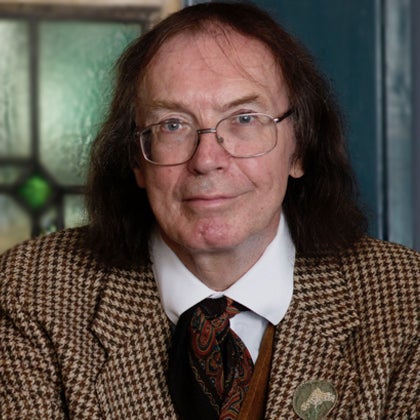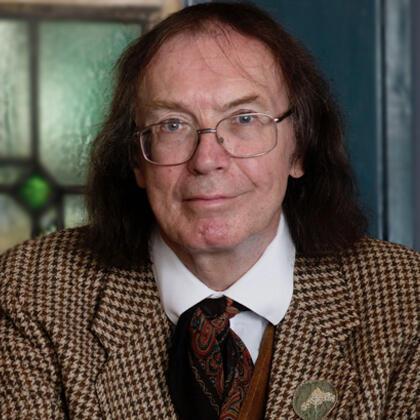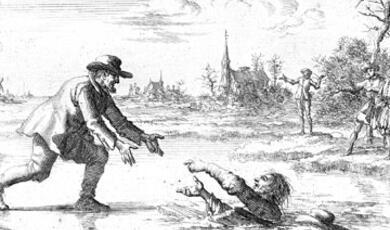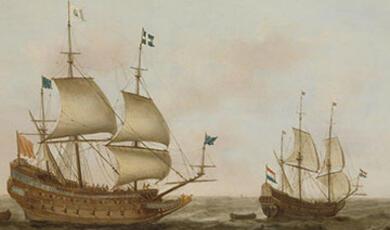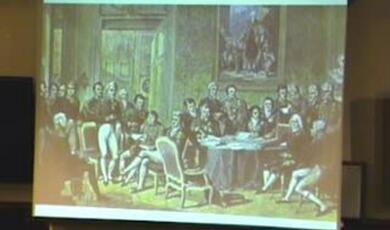The Return of the Horned God
Share
- Details
- Text
- Audio
- Downloads
- Extra Reading
Until the nineteenth century, the favourite ancient pagan gods in Western culture were those related to human qualities and activities. During that century, especially in Britain, attention switched to a horned divinity associated with the countryside and wild nature, often personified as the Greek Pan.
This lecture explores how and why this happened, and the impact on British culture, when the full subversive potential of this deity as a force for personal liberation became realised. It also shows how the image subsequently evolved from a classical god into an archetype.
Download Text
The Return of The Horned God
Professor Ronald Hutton
19 February 2025
The dominant image of a pagan male deity in the modern world is one of a horned god of nature. That was not the case in ancient times, when there were plenty of horned (or antlered) gods around, but the most popular and widespread male deities were patrons of civilization and its functions. This pattern persisted in Europe through the Christian centuries. It changed dramatically around 1800, when the spread of urbanization and industrialization, above all in England, made nature for the first time seem a fragile entity, threatened by these changes. The perceived need to reconnect with it demanded a new favourite deity, and to English writers and artists of the time, soaked in the Greek and Roman classics, the god Pan was the obvious one to assist. After 1800 references to him multiplied so fast that he became the most frequently cited deity in English literature. In ancient Greece he had indeed been associated with the wild and exciting aspects of nature but was only the leading god in a few backwood regions. Medieval and early modern writers hardly mentioned him and not a single major creative writer dealt with him in England between 1650 and 1750. His sudden popularity in the early nineteenth century was therefore a major revolution in taste.
The early Romantic poets celebrated him in the form in which he was to gain ever more admiration in the next hundred years, as the personification of the shrinking English countryside, especially in summer and for a city-dweller on holiday. Between 1895 and 1914 he reached the apogee of his popularity in this respect. The commonplace nature of his role by that time, and its familiarity, should not be allowed to obscure its power. He expressed all the positive aspects with which the Romantic Movement had invested the natural world: awe-inspiring, comforting, and redemptive. He was pitted against the perceived ugliness and unhealthiness of the new urban environment and the perceived aridity and philistinism of the new science. He offered a return to the lost peace and joy of a sylvan wonderland, and could epitomize nostalgia for a religion of merrymaking, self-expression, and reunion with nature. That religion could be contrasted with Christianity, which some associated with authoritarianism, repression, and disdain for the natural world.
As the nineteenth century drew to a close, the full subversive potential of Pan came to be realized in a number of different ways. The least provocative was to turn him into the Green Jesus, a wise, protective, and gentle divine figure to whom humans scarred by civilized life could turn for comfort healing. The most famous appearance of the god as loving redeemer came as ‘The Piper at the Gates of Dawn’, in Kenneth Graham’s The Wind in the Willows. Pan as protector and saviour, however, was just one development of the god’s form. To other artists and writers, he appealed precisely because he was not a safe god, but a dangerous and bestial one. As such, he could be used as a battering ram against respectability. After all, Christian tradition already had a more obvious parallel for the horned god than Jesus, and one directly opposed to him. If Christ sometimes influenced the image of Pan in Victorian and Edwardian culture, Pan seems to have influenced that of Satan. Until then, the Devil was represented in many different part-animal forms, but only then did he acquire a goat’s horns, beard and hooves as his standard equipment.
Certainly, by the 1900s the god was regularly featuring in poems, drawings, and stories as a tempter, but in the positive sense of leading modern humans away from stifling social conformity and repression. In the work of Aubrey Beardsley, E. M. Forster, Max Beerbohm, Algernon Blackwood, Lord Dunsany, and many others, he was the deity of those who turned on, tuned in, and dropped out. This role was strengthened still further in the 1920s, as the more twee, sentimental image of Pan as gentle god of nature began to wane in the face of harsher and grittier literary tastes.
One obvious area in which Victorian and Edwardian English mores could be challenged was that of sexuality, and the half-goat nature of Pan made him a first-class challenger. In particular, he could function as the liberator of types of sexuality which were either repressed or forbidden. Into the former category fell the female libido, and women writers like Eleanor Farjeon and Teresa Hooley wrote of being seduced by him. Into the second category felt gay sexuality, and by 1900 Pan had become a patron of that, featuring in the work of Oscar Wilde and ‘Saki’, and finding his most dramatic expression in this tole in Aleister Crowley’s ‘Hymn to Pan’.
The big change of the mid-twentieth century was that Pan got cut loose from his classical roots and turned into an archetype, ‘the Horned God’. The vital work here was taken in 1933 by Margaret Murray, who collected images of and references to such a deity from all over the ancient world and declared him to have been the main god of the Old Religion of north-western Europe. There, she added, he had generally been known as Cernunnos. In all of this she was incorrect, but her impact on the popular imagination was enormous, and when a genuine, operative Paganism appeared in England at the end of the 1940s it made the horned god of nature its male deity. He was however no longer called Pan.
© Professor Ronald Hutton 2025
References and Further Reading
Hutton, Ronald, The Triumph of the Moon. 2021.
Merivale, Patricia, Pan the Goat-God. 1969.
Robichaud, Paul, Pan: The Great God’s Modern Return. 2021.
References and Further Reading
Hutton, Ronald, The Triumph of the Moon. 2021.
Merivale, Patricia, Pan the Goat-God. 1969.
Robichaud, Paul, Pan: The Great God’s Modern Return. 2021.
Part of:
This event was on Wed, 19 Feb 2025
Support Gresham
Gresham College has offered an outstanding education to the public free of charge for over 400 years. Today, Gresham College plays an important role in fostering a love of learning and a greater understanding of ourselves and the world around us. Your donation will help to widen our reach and to broaden our audience, allowing more people to benefit from a high-quality education from some of the brightest minds.


 Login
Login
